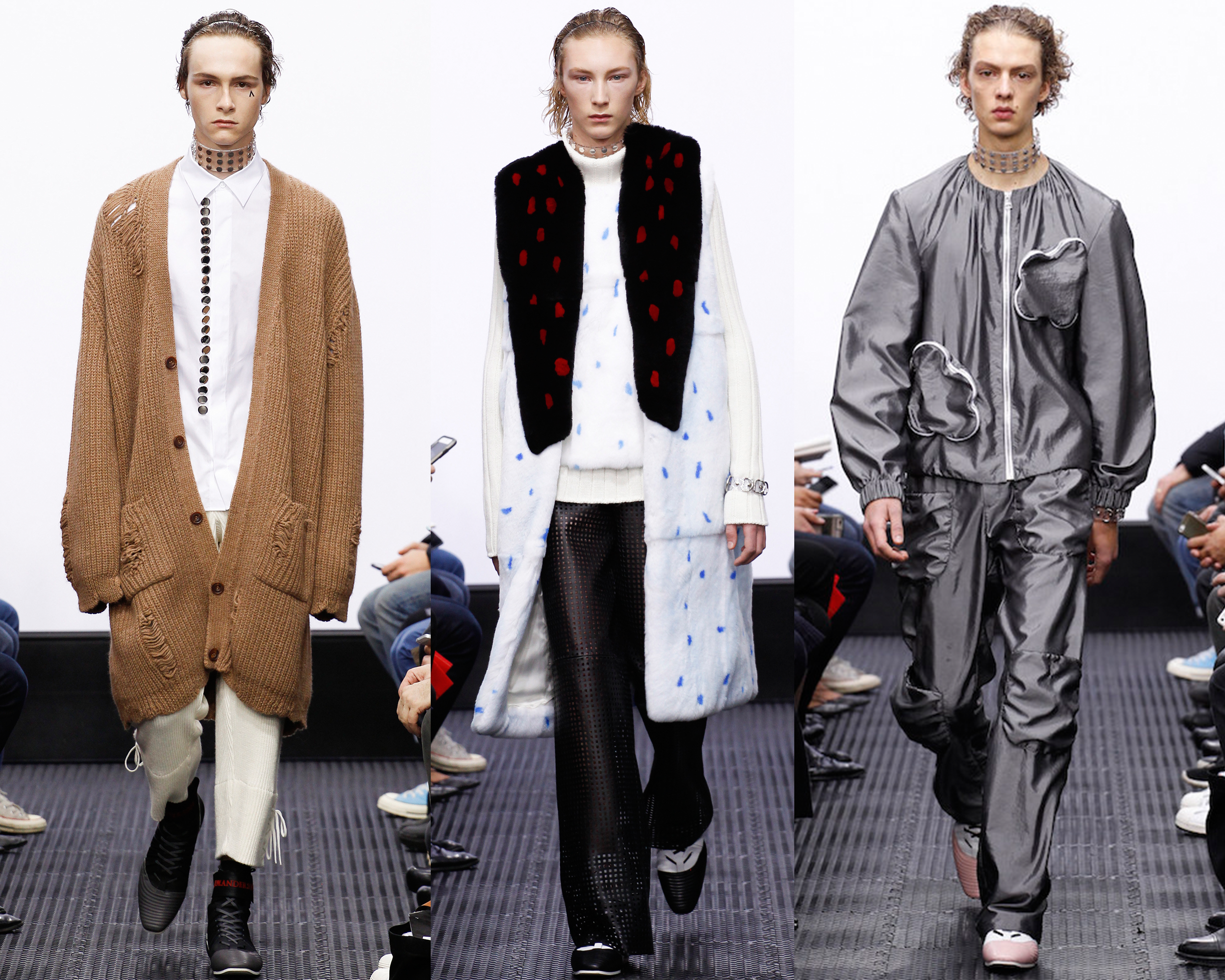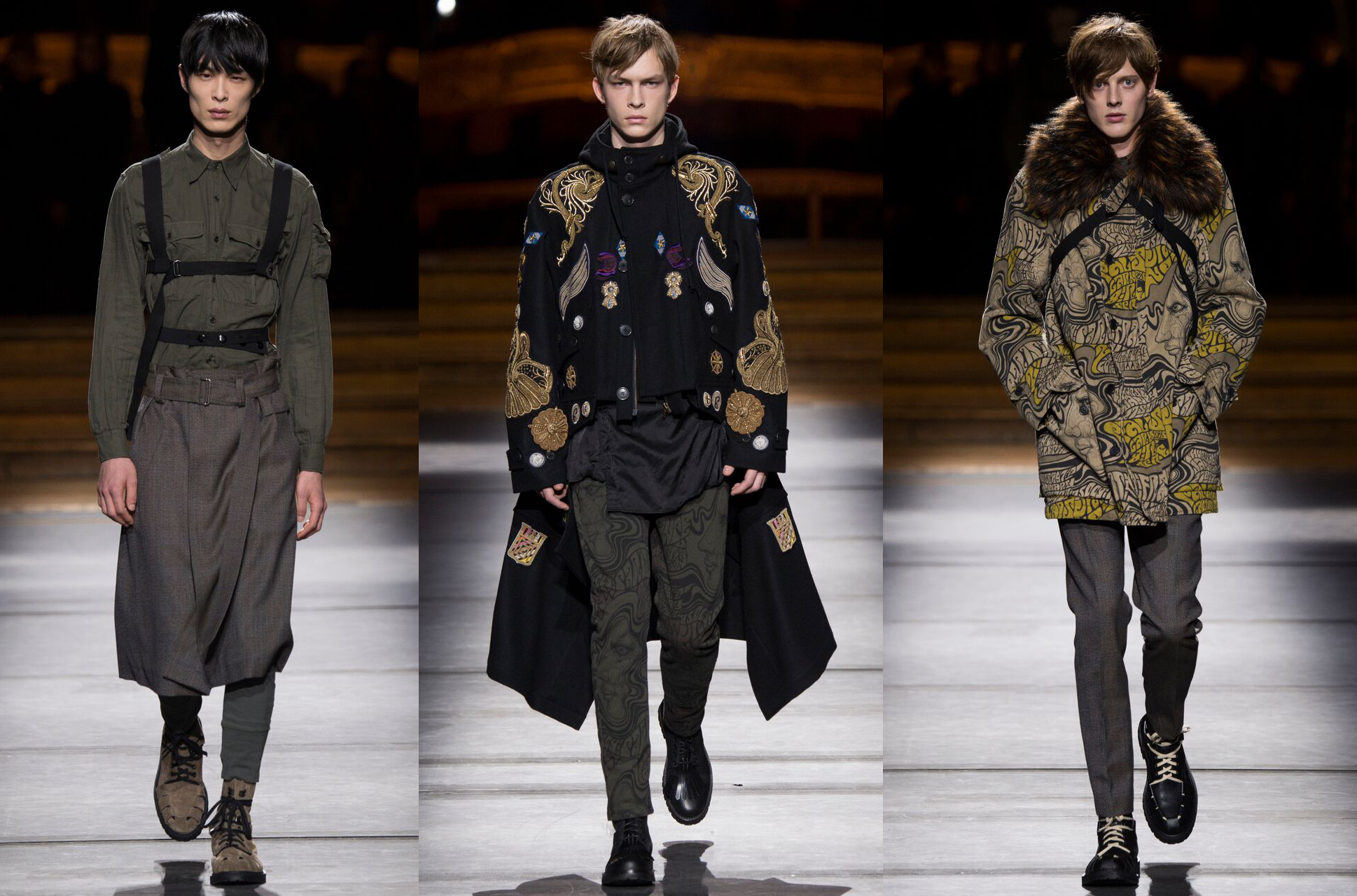Menswear Takes the Stage

Fashion loves a good spectacle. From Ricardo Tisci’s 9/11 runway tribute in New York to Marc Jacobs’s takeover of the renowned Ziegfeld Theater, womenswear designers have proven that how a collection is presented is just as important as the clothing itself. As the burgeoning menswear industry climbs the ranks of fashion, it is only appropriate that designers take to the theatrical stage – both figurative and literal – to announce that they, too, are ready to play in the big leagues.
In 2016 there is no grander stage than the apps that allow us to virtually showcase the best version of ourselves. To reach their target audiences, brands and fashion houses have long been using social media platforms like Facebook and Instagram, where they encourage clientele to join in the daily, publicized narratives of their lives. Not one to miss a beat, young and innovative British designer J.W. Anderson live-streamed his menswear AW 2016 collection on Grindr, the gay dating and hook-up app known for high-speed matches. Anderson explained that the decision was a response to the pressures of a fast-paced fashion week circuit, which, in contrast to many of his peers, he has openly embraced as an opportunity to exercise his creativity.
Models hastened down the runway clad in a mashup of streetwear, grunge, and a contemporary, androgynous luxury. Track pants were paired with oversized coats that mimicked flight suits, while distressed cardigans starkly contrasted sumptuous fur coats dyed to look like Ermine. All the looks were finished with running shoes, the most literal reference to the show's overarching spirit of forward motion. While the lack of cohesion between references may have diluted the impact of Anderson’s message, the collection culminated as a respectful nod to past examples of subversive masculinity as Anderson attempts to navigate the future.
J.W. Anderson AW16. Image Credit: Vogue.com.
In Paris, industry veteran Dries Van Noten opted for what many believed to be a more classic theatrical setting. Attendees were invited to the historical opera house, Palais Garnier, a venue that has become quite popular with the fashion set in recent years. Yet any qualms that the popular setting would connote a rehash of fashion weeks past were quickly pacified as the audience was led through the back entrance of the building and onto the legendary stage – an honor previously bestowed only upon performers. In an unconventional orientation where guests occupied the parallel wings and photographers had their backs turned to an empty house, models marched downstage and back to the beat of the soundtrack's electric drum. The collection was classic Dries, featuring a range of military regalia ranging from exquisitely embroidered coats and vests, to bomber jackets and trench coats.
The unique staging of the show was not the only way Van Noten bucked expectations. As a designer known for his brocades and prints, this collection Van Noten enlisted the help of graphic artist Wes Wilson, known as the godfather of the sixties and seventies psychedelic aesthetic, to bring a trippy twist to his regimental collection. In many ways, the show seemed to be suggesting a sort of changing of the fashion guard. The collaboration with Wilson was a literal reference to an era with a political climate much like our own – one rife with injustice, violence, and war – ultimately prompting a major change in aestheticism and fashion. As the industry continues to question not only the fashion calendar but also the value of creativity, Van Noten dared to place its key players on a stage, as if he was calling for deep introspection.
Dries Van Noten AW16. Image Credit: Vogue.com.
Beloved up-and-coming Parisian designer and winner of the 2015 ANDAM award, Stephane Ashpool regularly opts for theatrical performances cast with family and friends to present his Pigalle line. This season was no different, as Ashpool and his Parisian crew installed themselves in the Théâtre de l’Atelier. The collection was the most comprehensive representation of Pigalle’s sportswear-imbued-with-femininity aesthetic to date, featuring what has become his go-to color palette of pastels juxtaposed with deep mauves, burgundies, and navies. The collection was also Ashpool's first following a mentorship under Chanel. Designs in fabrics such as mohair, silk organza, buttery leather, and boucle were further refined through details of embroidery and plisse vents – all of which were achieved by the help of les petites mains of the Chanel atelier.
In many ways, Pigalle’s trajectory from the maker of a hyped logo t-shirt to a high-end, "Made in France" fashion label embodies the evolution of menswear. It appears no one is more aware of the transformation than Ashpool himself. The designer continues to pepper his collections with his esteemed logo, closing this season’s show with a top coat featuring the word Pigalle beaded and covered with coiled threads that unfurled, reaching down to the back hem.
Pigalle AW16. Image Credit: Vogue.com.
It felt natural that so many designers would choose theater as a medium to tell their stories. Considered second string to womenswear for far too long, menswear designers used this AW16 season as an opportunity to debunk misconceptions of not only the industry, but of masculinity as a whole.










